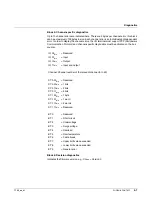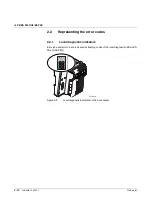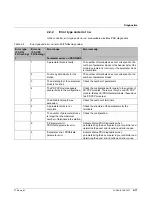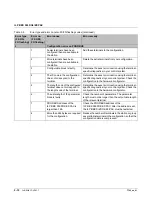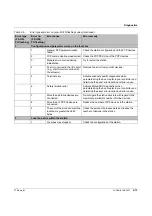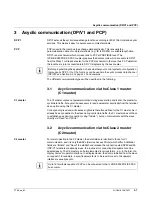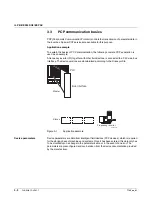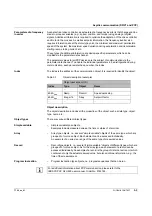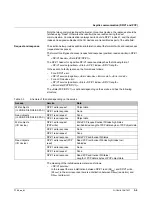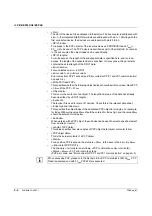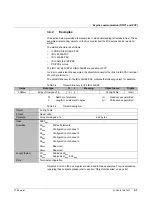
IL PB BK DI8 DO4/EF-PAC
2-6
PHOENIX CONTACT
7725_en_01
Block 2: ID-specific diagnostics
The table shows the faulty local bus devices. For every faulty terminal, a "1" is entered.
In the first byte of the block, bits 0 to 5 specify the number of local bus devices and therefore
the length L of the block (8 devices for each byte, maximum). The minimum length of this
block is 2 bytes (1-byte 1 byte (8 devices, maximum)), the maximum length is
9 bytes (1-byte 8 bytes (63 devices, maximum)). The size of the ID-specific
diagnostic block depends on the number of configured terminals.
Block 3: Status PDU (terminal status)
For every local bus device there are 2 bits for status encoding:
The specifier (SP) equals 1 in the event of a faulty state. The specifier equals 2 if the terminal
changes from a faulty state to an error-free state. If the specifier equals 0, the state has not
changed.
In the first byte of the block, bits 0 to 5 specify the number of local bus devices and therefore
the length of the Status-PDU block. The minimum length of this block is 5
(4-byte 1 byte (4 devices, maximum)), the maximum length is 20 (4-byte header
+ 16 bytes (63 devices, maximum)). The size of the status PDU block therefore depends on
the number of configured terminals.
ST LD x: 00
= Terminal data valid
ST LD x: 01
= Terminal data invalid due to an error
ST LD x: 10
= Terminal data invalid due to incorrect terminal being connected
ST LD x: 11
= Terminal data invalid or no terminal connected
(despite configuration)
SP: 0
= No evaluation
SP: 1
= Error occurs (number > 0)
SP: 2
= Error disappears (number = 0)
SP: 3
= Reserved
















